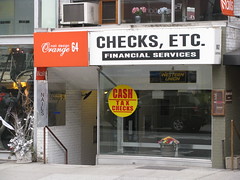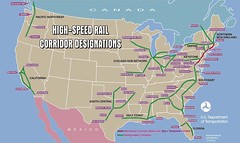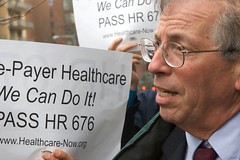 Image via Wikipedia
Image via Wikipedia
This is part of the hidden costs of the factory/competition model that forces little boys into a model more suited to little girls, groups all kids by age into cohorts that have nothing to do with their actual developmental progress, and damages all children.
We force very young children into academics too early and create a sense of failure in many of them, permanently crippling them for life. On top of that, we waste years infantalizing teens, keeping them in a passive receptor mode when they could be bursting with life and creativity and guiding their own education. We need an overhaul desperately.
Elementary schools need to become much more highly staffed and much less regimented; there have to be enough adults in close contact with every kid that every kid can be helped to win at the critical tasks on a schedule that works for them, not for their mythical cohort. No homework, no grades, just building learning capacity and proficiency. More art, more music, more play, and much more foreign language instruction. Introduction of reading based on each child's readiness. No separate math or science classes -- math and language recognized as different faces of the same task (describing the world and sharing ideas), and woven together -- quantitative descriptions of things woven together with non-quantitative ones from the very start, with increasingly complex quant tools provided just as increasingly sophisticated words are provided naturally, as needed.
The goal should be to "graduate" kids from elementary school on their own developmental timeline -- with this graduation occurring when the child has the capacity to begin directing his/her own learning and his/her parent(s) are ready to sit down with the school and develop a contract for their future learning and goals: what skills will they acquire, what vocations will they be equipped to pursue, and how will they gain those abilities.
Middle school is then one or two-year transition to this student/family led model of schooling; high school is the complete expression, with much higher student-teacher ratios (to prevent lectures and other forms of educational malpractice from occurring).
Don't ALL kids deserve an individual education plan?
Why do we only require schools to consider the individual needs of the "learning disabled?" And aren't many "learning disabilities" simply the result our prior failure to treat children as individuals in the first place?
Or, I suppose we can just keep trying to hammer kids through the standard slots we've defined, like square pegs and round holes, all for the convenience and benefit of the adults and the bus drivers -- and pay the costs such as these below:

. . . Don Austin, sitting in a Hennepin County jail cell, was 15 when he decided he wanted to learn to read — really, really wanted to learn.
In April 2008, he stole a car and caused an accident that killed a woman. He spent the next 20 months locked up in Hennepin jails while the court system worked out whether he would be tried as an adult.
While he waited to go to trial, Austin was supposed to have the same six-hour school day as any other Minnesota child, including two hours of special education. Instead, for much of that time, he got just an hour a day.
In jail, literally captive, Austin fell in love with reading. For the first time in his life, he asked if he could spend more time in class. Minneapolis Public Schools' answer: No.
"He was asking his teacher to let him go to school," said Amy Goetz, founder of the School Law Center in St. Paul and Austin's attorney. "It's incomprehensible that he would be asking for education and not getting it."
. . . Minnesota spends 3.7 times as much per prisoner as it does per public school student. According to census data, the state has the 20th-highest juvenile incarceration rate in the nation, with 259 of every 100,000 children imprisoned.
The National Council on Disability, a federal agency, estimates that 30 percent of children in the juvenile justice system have learning disabilities. Other studies put the figure as high as 70 percent. Poor, minority children are particularly at risk.
About 15 percent of the general population has some kind of neurological disorder that makes reading, writing, processing instructions and other tasks difficult without specialized support. Someone with dyslexia, for instance, can't understand written words the way other students do.
Children with such learning disorders usually are as smart as their peers. Some have another disability, such as attention deficit disorder, autism or behavioral disorders.
More than half of state's jailed juveniles are learning disabled
In Minnesota, more than half of incarcerated juveniles have some kind of learning disability, according to the PACER Center, and a third of incarcerated children have a persistent mental health issue, as opposed to 14 percent of all kids.
Kids in the juvenile justice system are twice as likely to have been abused, and 75 percent qualified for free- or reduced-price lunch, vs. 39 percent of students statewide.
"They often feel frustration and isolation in school," explained Lili Garfinkel, coordinator of PACER's Juvenile Justice Project. "They often have few friends; many are bullied; and they may 'act up' to cover the fact they are unable to participate as equals in their classroom.
"They may not have the language or social skills to navigate appropriate interactions in school," Garfinkel noted. "The behaviors may be serious enough to cause them to be suspended truant, or, in more serious cases, expelled. By not attending school, however, they become further behind and overwhelmed."
Girls with unaddressed learning disabilities often act out by withdrawing, while boys can become defiant or aggressive, experts say. Making things worse, some learning disabilities are accompanied by communication problems and poor comprehension.
"Such characteristics cause children with disabilities to appear 'uncooperative,' 'disrespectful,' 'angry,' and 'irritable,' and act to increase the likelihood that these youths will have negative encounters with the juvenile justice system," a 1995 study found.
The cycle is particularly pernicious for African-American boys, who frequently end up in alternative schools; few of them graduate.
"Almost always when you look at their records, you see kids who were turning over tables in the fourth grade when it was time to read," said Goetz. "As they feel their education program is a failure, they act out. They spill out into the community. Kids like Don feel helpless and hopeless, and there are all those temptations out there."
Once a learning disability has been diagnosed, a student often ends up with a formal plan for services known as an Individualized Education Program, or IEP. School administrators are legally obligated to follow a student's IEP unless they go through a complicated process involving the student's parents to change it. . . .
![Reblog this post [with Zemanta]](http://img.zemanta.com/reblog_e.png?x-id=9eff3c22-126b-417b-90e9-611a3c183cf7)
 A clear, concise, chilling article by my favorite actuary, Gail the Actuary, who does a wonderful job explaining this moment in time and its repercussions in easily understood language.
A clear, concise, chilling article by my favorite actuary, Gail the Actuary, who does a wonderful job explaining this moment in time and its repercussions in easily understood language.
![Reblog this post [with Zemanta]](http://img.zemanta.com/reblog_e.png?x-id=ffbe88ca-eb69-4092-b4bb-a61c195f0ea2)
![Reblog this post [with Zemanta]](http://img.zemanta.com/reblog_e.png?x-id=a8cfccc4-266a-42ec-b653-5da357965678)



![Reblog this post [with Zemanta]](http://img.zemanta.com/reblog_e.png?x-id=d48c8dcd-4f81-4659-b162-a694e911d845)

![Reblog this post [with Zemanta]](http://img.zemanta.com/reblog_e.png?x-id=ea3bb6bb-e95a-41e6-afb2-a838cdd902c0)


![Reblog this post [with Zemanta]](http://img.zemanta.com/reblog_e.png?x-id=7e5b9fa9-48b8-41d6-9076-3b6d71edb1b7)

![Reblog this post [with Zemanta]](http://img.zemanta.com/reblog_e.png?x-id=0d4af80e-681c-4a1c-8044-6056c1a88e20)

![Reblog this post [with Zemanta]](http://img.zemanta.com/reblog_e.png?x-id=eb0b14ed-3a51-444c-9e50-642cb6e22e5b)

![Reblog this post [with Zemanta]](http://img.zemanta.com/reblog_e.png?x-id=feeffef6-f58e-49e8-8baa-d9117147e70a)

![Reblog this post [with Zemanta]](http://img.zemanta.com/reblog_e.png?x-id=486c3619-2115-4478-952a-1000a4628cf1)



![Reblog this post [with Zemanta]](http://img.zemanta.com/reblog_e.png?x-id=9eff3c22-126b-417b-90e9-611a3c183cf7)

![Reblog this post [with Zemanta]](http://img.zemanta.com/reblog_e.png?x-id=b740fedf-e0fa-4afd-bf6b-cb24ddd9d8d2)

![Reblog this post [with Zemanta]](http://img.zemanta.com/reblog_e.png?x-id=342469c7-683e-4087-b17a-049acc487c95)

![Reblog this post [with Zemanta]](http://img.zemanta.com/reblog_e.png?x-id=696b266d-2fdd-4843-93c4-b7fc6ad976b2)

![Reblog this post [with Zemanta]](http://img.zemanta.com/reblog_e.png?x-id=57fd61ad-8d23-4fe3-8921-38b178bca401)

![Reblog this post [with Zemanta]](http://img.zemanta.com/reblog_e.png?x-id=a43fdb87-4818-431a-b07e-34c8f499d6cc)

![Reblog this post [with Zemanta]](http://img.zemanta.com/reblog_e.png?x-id=09c2ceaa-063b-40d5-9c52-e9db1a400eba)

![Reblog this post [with Zemanta]](http://img.zemanta.com/reblog_e.png?x-id=939c9e4a-34b3-4cb7-97fd-1ed66e4ebf4b)


![Reblog this post [with Zemanta]](http://img.zemanta.com/reblog_e.png?x-id=d83c0bbe-935d-4dfa-9093-da62c3f4ddec)

![Reblog this post [with Zemanta]](http://img.zemanta.com/reblog_e.png?x-id=9b4f0650-a7f3-4dbb-8777-53b2047d4307)


![Reblog this post [with Zemanta]](http://img.zemanta.com/reblog_e.png?x-id=307f2de1-42fa-452a-bbc8-52cf022d8436)

![Reblog this post [with Zemanta]](http://img.zemanta.com/reblog_e.png?x-id=550e530a-d232-4c58-962b-e0aa7f7b92a6)

![Reblog this post [with Zemanta]](http://img.zemanta.com/reblog_e.png?x-id=86425435-1b31-4121-92ae-cf391eac59bd)



